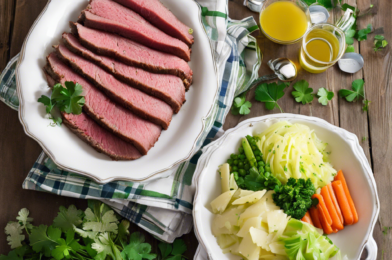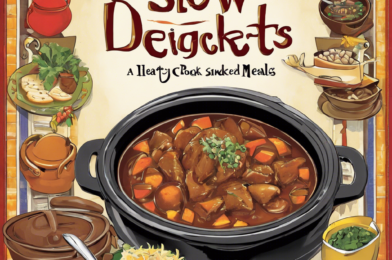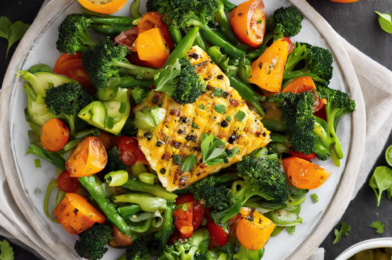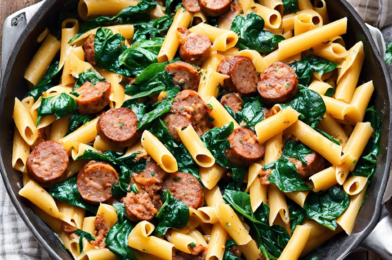Introduction
Egg salad, a beloved staple in many households, has stood the test of time as a go-to sandwich filling and a versatile ingredient in various dishes. Its creamy texture, mild flavor, and ease of preparation have made it a favorite among home cooks and professional chefs alike. In this comprehensive guide, we’ll delve into the art of crafting the perfect egg salad, exploring the secrets to its success and offering tips to elevate this humble dish to new levels of deliciousness.
The Significance of Fresh Ingredients
The quality of your egg salad begins with the quality of your ingredients. Fresh, high-quality eggs are the cornerstone of this dish. Opt for organic or free-range eggs, as they tend to have richer, more vibrant yolks, adding depth and a luxurious texture to your egg salad. The difference in taste and appearance is noticeable, making your egg salad a cut above the rest.
Mastering the Art of Hard-Boiled Eggs
The foundation of any great egg salad is, without a doubt, the hard-boiled eggs themselves. Here’s a detailed guide to achieving the perfect hard-boiled eggs:
Select and Prepare Eggs: Choose fresh, room-temperature eggs for the best results. Place them in a single layer in a saucepan, ensuring they have enough space to move freely.
Fill with Water: Cover the eggs with cold water, ensuring they are submerged by about an inch. This extra space allows for gentle cooking and prevents cracking.
Bring to a Boil: Turn on the heat to high and bring the water to a rolling boil. This rapid heating ensures even cooking.
Time for Perfection: Once the water is boiling vigorously, cover the saucepan and remove it from the heat. Let the eggs sit in the hot water for a precise amount of time: 12 minutes for medium-set yolks and 15 minutes for fully set, firm yolks.
Cool and Peel: After cooking, transfer the eggs to a bowl of ice water to stop the cooking process and make peeling easier. This rapid cooling also helps prevent a greenish ring from forming around the yolks.
Crafting the Ultimate Egg Salad
With your perfectly cooked eggs in hand, it’s time to create the star of the show:
Chop with Precision: Peel the eggs and chop them into small, uniform pieces. This ensures a smooth and consistent texture throughout your salad.
Mayonnaise Magic: Add a generous amount of mayonnaise to bind the ingredients together. Opt for a high-quality, full-fat mayonnaise for the richest, creamiest results.
Season with Care: Sprinkle salt and freshly ground black pepper to taste. Be mindful of the salt, as mayonnaise can already be quite salty. Adjust the seasoning as needed, tasting as you go.
Garnish and Flavor Boost: Elevate your egg salad with a variety of flavorful additions. Chopped celery adds a crisp, refreshing element, while green onions bring a subtle onion flavor. Fresh herbs like dill or chives offer a burst of aroma and taste. A squeeze of lemon juice brightens the flavors and adds a tangy twist.
Personalize Your Creation: Feel free to experiment with different ingredients to make your egg salad unique. Some enthusiasts add a touch of Dijon mustard for a spicy kick, while others prefer a pinch of paprika for a subtle warmth. Get creative and find your perfect combination!
Versatile Serving Suggestions
Egg salad’s versatility knows no bounds, and it can be enjoyed in countless ways:
Classic Sandwich: Spread a generous amount of egg salad on toasted bread, add some crisp lettuce and ripe tomato slices, and enjoy a classic lunch.
Wrap It Up: For a portable option, use a soft tortilla wrap or a flatbread to create a delicious egg salad wrap. Add some baby spinach and sliced avocado for an extra nutritious boost.
Dip Delight: Serve egg salad as a dip with a variety of crackers, vegetable sticks, or even potato chips for a satisfying snack.
Salad Sensation: Transform your egg salad into a hearty salad by adding it to a bed of mixed greens. Top with cherry tomatoes, cucumber slices, and a drizzle of balsamic vinaigrette for a complete meal.
Storage and Safety Tips
Egg salad, like any dish containing mayonnaise, requires proper storage to ensure food safety:
Chill It: Always store your egg salad in the refrigerator. It can be kept for up to 3-4 days when properly chilled.
Avoid Cross-Contamination: Use clean utensils and avoid double-dipping to prevent the growth of bacteria. Serve egg salad with disposable utensils or transfer it to individual portions to avoid contamination.
Leftovers: If you have leftovers, it’s best to consume them within 24 hours for optimal quality and safety. Egg salad should not be kept at room temperature for extended periods.
Conclusion
Egg salad is a timeless classic that, with a few simple techniques and fresh ingredients, can be transformed into a culinary masterpiece. Whether you’re preparing it for a quick lunch, a special picnic, or a sophisticated appetizer, this versatile dish is sure to impress. So, embrace the art of egg salad and let your creativity shine!









